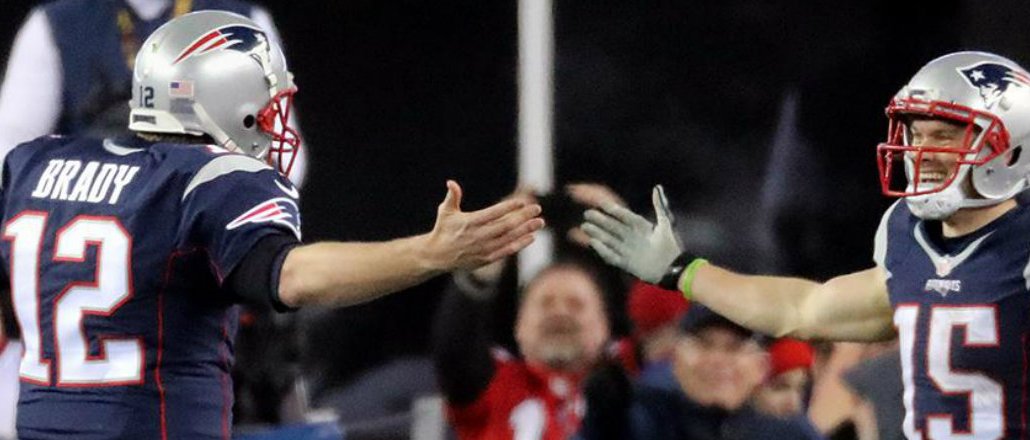Save 50% on a 3-month Digiday+ membership. Ends Dec 5.
‘There’s a bit of fatigue’: Why some brands are staying away from Super Bowl this year

Super Bowl ads seem to have been a tougher sell this year than usual.
Brands including Butterfinger, Toyota, Frito Lay and Taco Bell are sitting the Super Bowl out after years of advertising during the big game. Only 90 percent of Fox’s ad slots for the event were sold out as of early December — a benchmark usually hit in September or October.
Blame increasing competition and risk, a heftier price tag, decreasing returns and NFL’s own woes, said advertising executives.
The cost of a 30-second spot has doubled in just a few years, from $2.5 million in 2010 to $5.5 million today, so it’s not like the demand is evaporating. But the media cost is only part of the total expense of a Super Bowl campaign, pointed out Mike Sheldon, chairman and CEO at Deutsch North America, which has worked with Taco Bell on Super Bowl spots in prior years. Ads now require significant digital support, a PR push and production and agency fees. A brand can easily spend upwards of $10 million around a moment — albeit the biggest of the year.
“The decision has become a heck of a lot difficult, and there’s a bit of a fatigue,” he said. “If you’re the CEO, you have to justify it a hell lot more.”
That’s not to say it’s not worth it for advertisers. A Super Bowl ad can boost awareness of a brand and drive sales, particularly around new product launches. That has been Toyota’s strategy, which advertised in the past six Super Bowls, but is not returning this year, because it has no launches until spring and summer, said Jack Hollis, group vp for marketing at Toyota Motor Sales, U.S.A.
Another problem is that with the arena extending far beyond just television, no one quite knows what ROI really means today, said Adam Kleinberg, CEO of Traction.
Ad position: web_incontent_pos1
“Everyone knows there’s value, but no one knows how to quantify it,” he said. “There is a lot more pressure than ever before.”
So it may just make more sense to find a way around the typical TV spot, said Kleinberg, as Frito-Lay is doing this year. The brand has built bags of Tostitos with built in Uber-calling breathalyzers — not a very practical invention, but an eyeball-grabbing one for sure.
“It will get them a bunch of press and social media attention without having to pay millions of dollars for a spot,” he said.
Then, there’s the most obvious culprit: the NFL itself. Apart from its several branding challenges in recent years, NFL’s ratings have also dipped this year. The NFL reportedly saw an 8 percent drop in TV ratings during the 2016 regular season compared to 2015, according to ESPN. With fewer people watching NFL games, spending lavishly on the Super Bowl becomes a less enticing prospect for advertisers.
Even if brands decide to go for it, the downsides associated with a hyperconnected cross-platform audience have become increasingly apparent in recent years. Social media has increased the scrutiny of Super Bowl ads, said Catherine Warburton, chief investment officer at Assembly. Nationwide’s well-intentioned yet morbid ad from 2015, featuring a young (dead) boy talking about his life swiftly generated negative backlash — a textbook example of how things can go horribly and expensively wrong.
Ad position: web_incontent_pos2
In the end, an uncertain economic and political landscape following the election of Donald Trump may also be a factor in making brands more cautious than usual.
“The Trump phenomenon has created a vacuum,” said Sean Cummins, global CEO at Cummins&Partners. “Brands are being timid and hesitant to put their heads up and work in this new environment.”
More in Marketing

Ulta, Best Buy and Adidas dominate AI holiday shopping mentions
The brands that are seeing the biggest boost from this shift in consumer behavior are some of the biggest retailers.

U.K. retailer Boots leads brand efforts to invest in ad creative’s data layer
For media dollars to make an impact, brands need ad creative that actually hits. More CMOs are investing in pre- and post-flight measurement.

‘AI is permeating everything we do’: How Guitar Center developed 2 AI tools this year
This summer, the company launched a chatbot called Rig Advisor to help customers find the right instruments and products.
Ad position: web_bfu



